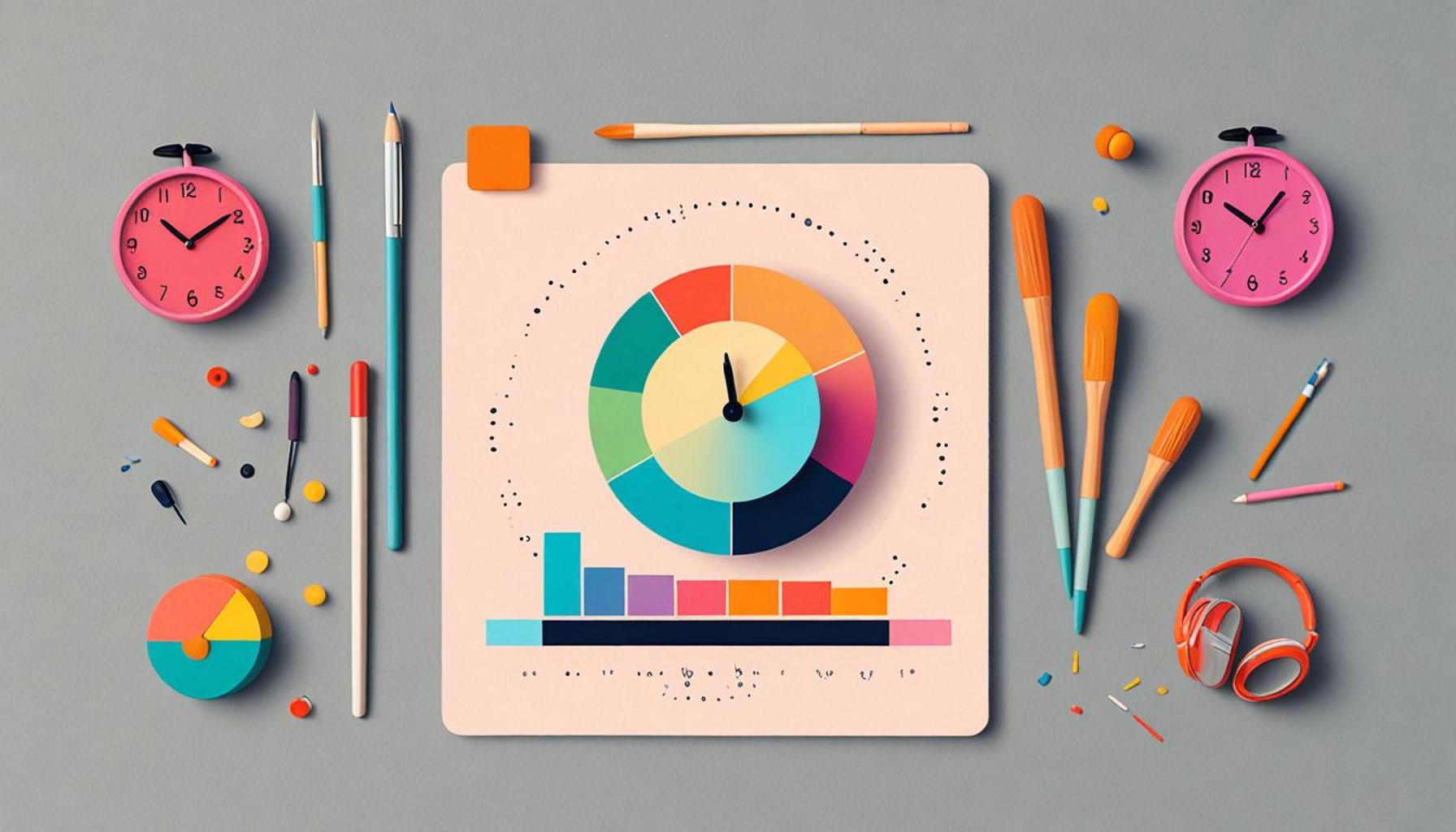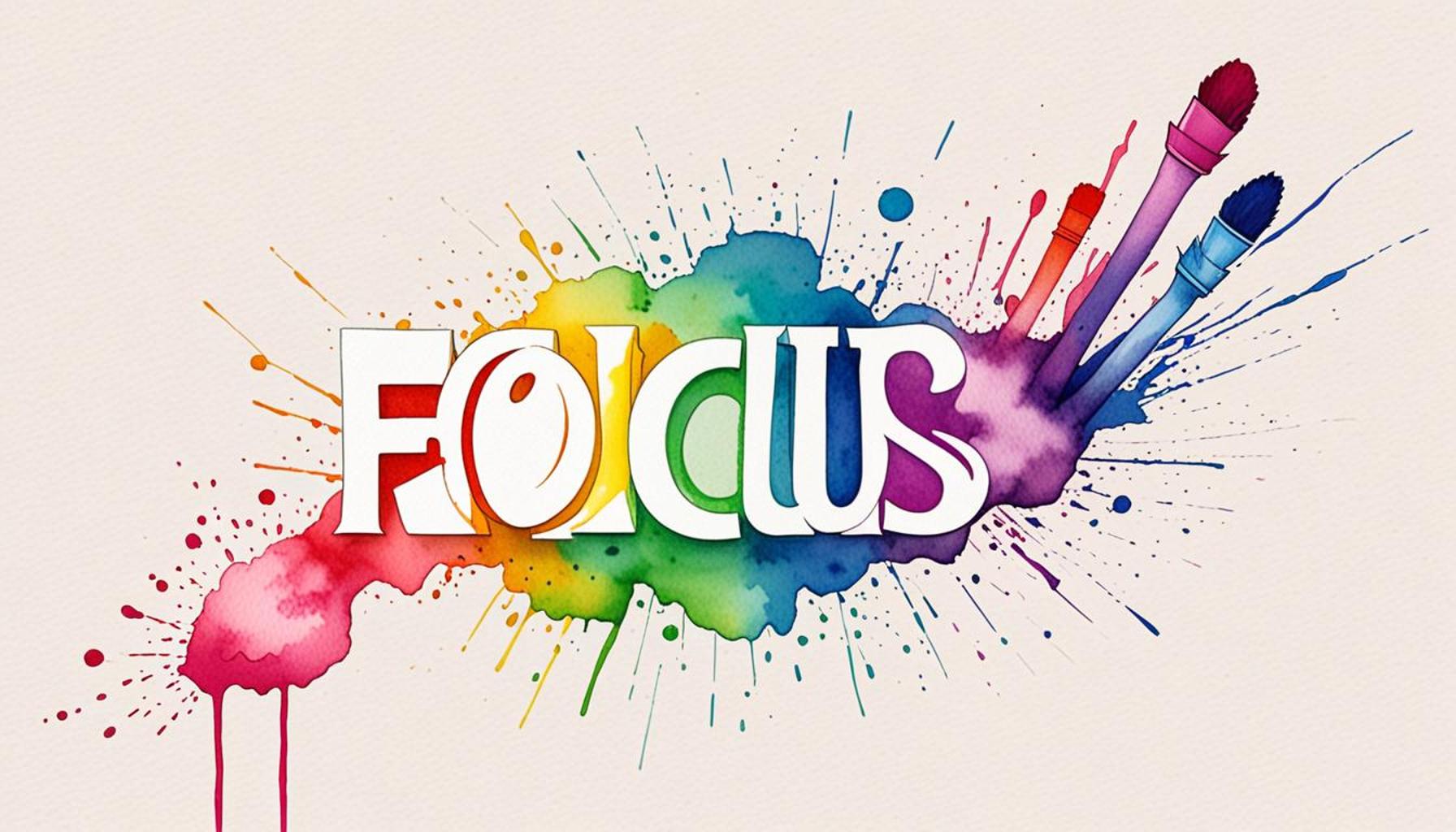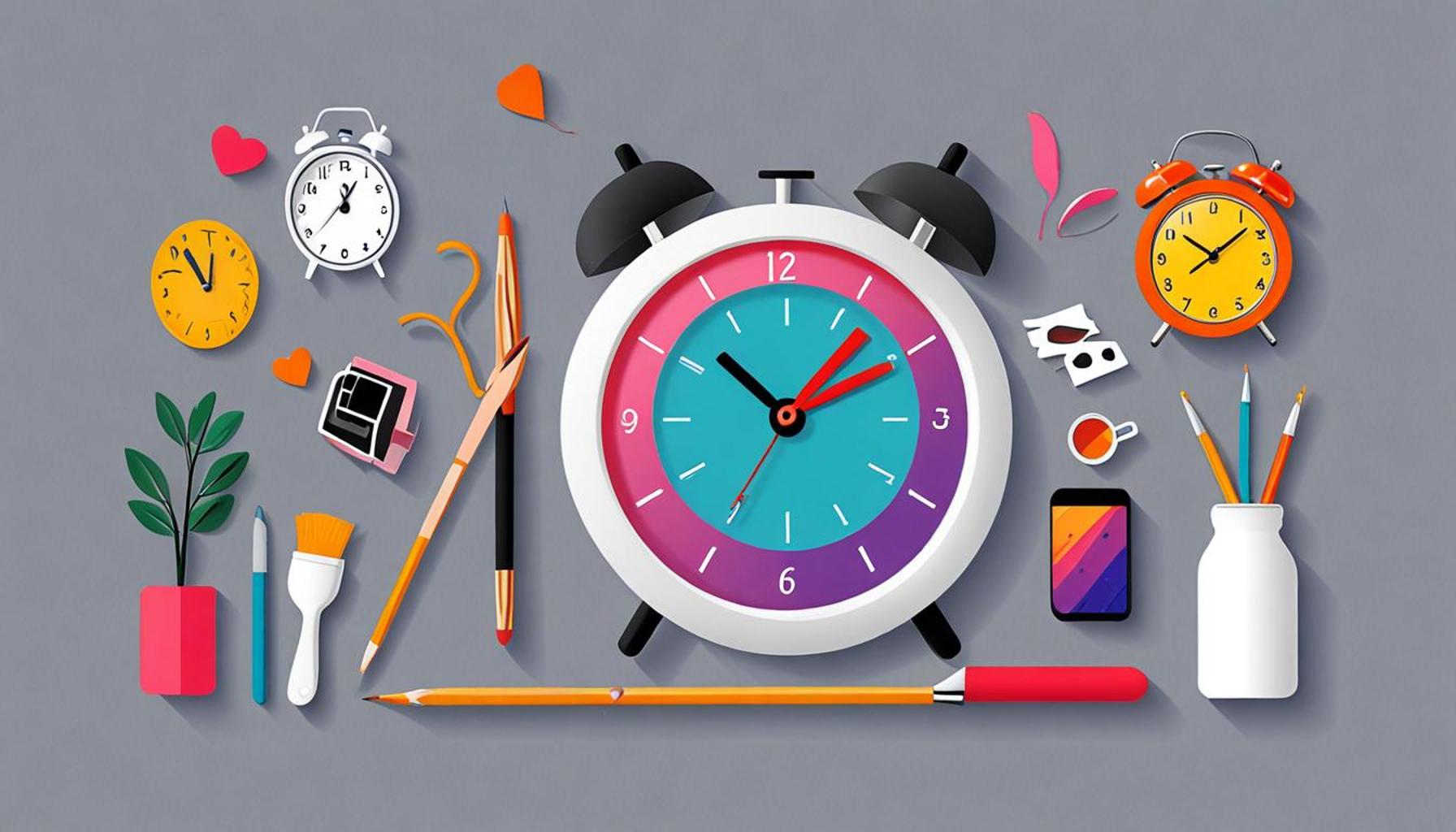Rhythm and Routine: Incorporating Minimalist Practices into Your Weekly Schedule

Finding Balance in a Busy World
In today’s fast-paced society, the search for simplicity amidst chaos can feel overwhelming. One effective approach is to embrace minimalist practices that enhance productivity and well-being. By introducing rhythm and routine into your weekly schedule, you can unlock a smoother path toward achieving your goals. Minimalism isn’t just about owning fewer possessions; it’s about creating space for what truly matters in life.
Consider these key elements of a minimalist lifestyle that can transform your days:
- Decluttering: This first step involves reducing physical and mental clutter to create a more focused environment. Studies show that a clean space can improve concentration and lead to greater creativity. Begin with small areas in your home or workspace; for example, dedicate a weekend to clearing out your closet or your office desk. The visual and psychological benefits of decluttering can provide immediate boosts in motivation and mental clarity.
- Time Blocking: This technique involves allocating specific time slots for tasks to sustain momentum throughout the week. For instance, creating blocks in your calendar dedicated to focused work, exercise, or family activities can help prioritize what’s truly important. A common method is the Pomodoro Technique, which encourages working for 25 minutes followed by a 5-minute break. This can improve efficiency and help minimize distractions, allowing you to accomplish more with less stress.
- Mindfulness: Incorporating moments of reflection and intentionally slowing down improves overall mental health. Mindfulness practices such as meditation, yoga, or even brisk walks can ground you in the present moment. Research indicates that mindfulness can reduce symptoms of anxiety and depression and enhance emotional regulation. Consider allocating just five minutes a day to breathe deeply and focus on your surroundings; this small act can be incredibly restorative.
Integrating these practices into your weekly schedule can yield substantial benefits. Many people, from busy professionals to stay-at-home parents, have reported:
- Increased productivity and efficiency in daily tasks, allowing them to spend more time on what they love.
- Improved mental clarity and a sense of peace, making it easier to navigate life’s challenges.
- Boosted energy levels and overall health through mindful living, which can lead to better eating habits and a commitment to physical activity.
Exploring these minimalist strategies can lead to a richer, more satisfying life. By cultivating intentionality in your space and schedule, you can create a life that aligns with your values and priorities. This article will guide you through practical steps to incorporate these practices, ensuring that rhythm and routine become your allies in navigating the complexities of modern life.
DON’T MISS: Click here to learn about living intentionally with your children

Creating Structure Through Routine
Incorporating minimalist practices into your weekly schedule begins with establishing a solid routine that prioritizes your most important tasks. A well-crafted routine not only provides structure but also fosters a sense of accomplishment as you consistently check items off your to-do list. By mapping out your week, you can identify time slots for productivity, leisure, and self-care, allowing you to dedicate energy to what truly enriches your life.
One effective approach to structuring your week is using a combination of weekly planning and reflection. Spend a few moments each Sunday assessing what you accomplished the previous week and determining what needs your attention in the upcoming days. This not only helps create a roadmap for your week but also allows you to celebrate small wins, reinforcing positive habits.
Essential Components of a Minimalist Routine
When designing your minimalist routine, consider integrating the following components to enhance efficiency and overall satisfaction:
- Prioritization: Begin by identifying your top three priorities for each week. Focus on tasks that align with your long-term goals and happiness. This minimizes the risk of becoming overwhelmed with less essential tasks, allowing you to devote energy where it matters most.
- Time Allocation: Be intentional about the time you dedicate to each task. Use tools like digital calendars or planning apps to set specific time frames for each priority, which can aid in maintaining focus. For example, allocate specific hours to respond to emails, attend meetings, and catch up on personal projects. This technique helps ensure that tasks don’t expand beyond their necessary time slots.
- Breaks and Downtime: Integrating short breaks within your routine is crucial for maintaining momentum. Research suggests that breaks can replenish mental energy and boost creativity. Consider using techniques like the Pomodoro Technique mentioned earlier, or simply scheduling downtime to unwind and recharge during your busy schedule.
- Flexibility: While structure is vital, it’s equally important to allow for some flexibility. Life is unpredictable, and adapting your plans as needed can reduce stress. If a priority is taking longer than anticipated, reevaluate and adjust your schedule rather than forcing completion.
By consciously designing your weekly routine with these components in mind, you can create a rhythm that supports your minimalist lifestyle. Each element works in tandem to streamline your process, reinforcing a sense of control and purpose. As you familiarize yourself with rhythm and routine, you will likely find that embracing minimalism leads not only to a clearer schedule but also a clearer mind, making room for personal growth and contentment.
Breaking away from perennial busyness requires dedication, but the practices learned through incorporating minimalism into your weekly schedule can be transformative. With clarity and intention, you’ll discover that a well-structured routine can illuminate a path toward a more meaningful existence, aligning your days with your true aspirations.
| Category | Details |
|---|---|
| Time Management | Prioritizing tasks to maximize productivity while minimizing stress. |
| Mental Clarity | Simplifying your schedule enhances focus and decision-making abilities. |
| Reduction of Clutter | Minimalist practices encourage shedding excess, making daily routines more efficient. |
| Sustainable Living | Incorporating routines that align with your values can lead to a more fulfilling life. |
Integrating minimalist practices into your weekly schedule allows you to cultivate a rhythm that fosters balance and peace. By focusing on time management, you can efficiently allocate your time to essential tasks, reducing the overwhelm often felt in busy lifestyles. Furthermore, this approach promotes mental clarity, which is crucial for clear thinking and productivity. The reduction of clutter in both physical and mental spaces leads to a streamlined daily experience; every moment becomes more purposeful. In addition, embracing these minimalist practices not only simplifies life but also promotes sustainable living. Adopting routines that resonate with your values enables you to make conscious choices that contribute to your overall well-being. Explore deeper into how these practices can transform your life and refine your perspective on what truly matters.
DISCOVER MORE: Click here to learn how to optimize your space
Optimal Tools for Streamlining Your Routine
To effectively implement minimalist practices in your weekly schedule, leveraging the right tools and resources is crucial. In today’s digital age, several applications and methodologies are designed to help individuals maintain focus, prioritize tasks, and manage time efficiently—all while encouraging a minimalist mindset.
Digital Calendars and Todo Apps
One of the simplest methods for managing your minimalist routine is through the use of digital calendars and to-do list applications. Tools like Google Calendar or Todoist allow you to visualize your week at a glance, helping you allocate time for your priorities while easily integrating reminders and deadlines. These platforms not only reduce cognitive load by keeping tasks organized but also enable seamless collaboration if you’re working as part of a team.
Additionally, many of these tools offer features that allow you to categorize tasks by urgency or importance. Consider utilizing the Eisenhower Matrix approach within your to-do app, sorting tasks into quadrants labeled urgent, important, not urgent, and not important. This will help you focus on what truly matters, aligning your efforts with your minimalist goals.
Physical Planners and Journals
For those who prefer a tactile experience, a physical planner or journal can provide an equally effective system for tracking your routine. Writing tasks by hand engages different cognitive processes than typing, enhancing memory retention and increasing personal connection to your goals. Consider using a method like bullet journaling, which allows for a customizable layout where you can include to-do lists, habit trackers, and reflections.
Incorporating a weekly spread into your bullet journal enables you to visually separate your tasks and commitments, reducing the overwhelming feeling often associated with a packed schedule. As you record your experiences and accomplishments, you create a resource for reflection that can guide your future planning, ensuring continuous improvement in your minimalist practices.
Mindfulness and Meditation Techniques
Another essential element in balancing your routine with minimalism is incorporating mindfulness and meditation. Research has shown that these practices can enhance focus, reduce stress, and ultimately make your efforts more fruitful. As you allocate time in your week for your top priorities, consider integrating short meditation sessions to ground yourself during the process.
Many people find success with guided meditation apps like Headspace or Calm, which can help walk you through short sessions that fit seamlessly into your busy life. Engaging with your breath and being present can drastically improve your productivity and mental clarity, enabling you to return to your tasks rejuvenated and ready to tackle challenges.
Automation and Delegation
Lastly, one of the most revolutionary aspects of incorporating minimalist practices into your routine is recognizing when to automate or delegate tasks. Technologies like IFTTT (If This Then That) can automate repetitive tasks, thereby freeing up essential time for more important pursuits. Similarly, if you find yourself overwhelmed by household chores or administrative duties, consider delegating these responsibilities, whether to family members, friends, or even professional services.
By embracing the principles of automation and delegation, you create a more manageable schedule that aligns with your minimalist philosophy, allowing you to focus on your core values and passions while maintaining a decluttered and efficient routine. This proactive approach will support your journey toward a balanced and fulfilling life.
DIVE DEEPER: Click here to learn how decluttering can clear your mind
Conclusion: Embracing Minimalism for a Fulfilling Routine
Incorporating minimalist practices into your weekly schedule is more than a trend; it’s a pathway to achieving a balanced and fulfilling life. Adopting rhythm and routine through simplicity enables you to focus on what truly matters, enhancing both productivity and well-being. By utilizing digital tools and physical planners, harnessing the power of mindfulness and meditation, and recognizing the importance of automation and delegation, you can effectively streamline your commitments while creating space for personal growth and reflection.
As you reevaluate your priorities and eliminate distractions, you will discover that a minimalist lifestyle fosters clarity and intentionality in your actions. This transformative approach encourages not only a decluttered schedule but also a clearer mind, allowing you to approach challenges with renewed energy and creativity. Explore various strategies, experiment with methods that resonate with you, and fine-tune your practices to create a weekly rhythm that feels seamless and attainable.
Ultimately, the journey towards a minimalist routine is ongoing and personal. Embrace the process of simplification and regularly assess how your weekly rhythm serves your goals and aspirations. By nurturing a life grounded in minimalism, you open the door to profound insights and lasting satisfaction—allowing you to thrive, rather than merely survive, in a world that often overwhelms with choices and commitments.


